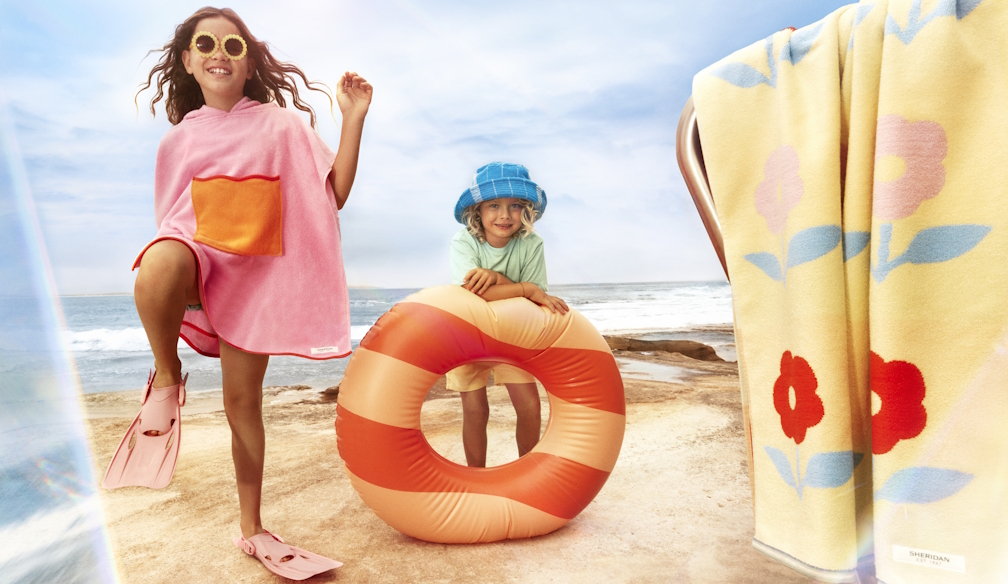Emergency response beacons can cut drownings at the beach – but 72% of people haven’t heard of them
- Written by Rob Brander, Professor, UNSW Beach Safety Research Group, School of Biological, Earth & Environmental Sciences, UNSW Sydney

Do you know what an emergency response beacon or “ERB” is? Do you know what it does? Do you know which beaches have one? If you answered “nope!” to any of those questions, you’re not alone – and that’s a problem.
In short, an emergency response beacon basically consists of a telephone and camera that sits on a pole on a beach. These can be triggered with a button press by anybody who sees someone in trouble in the water or on the sand.
In New South Wales, where emergency response beacons are located on some beaches, pressing the button puts you in immediate contact with a 24/7 duty officer at the Surf Life Saving New South Wales state operations centre.
This duty officer can then talk with the person, give instructions and dispatch the nearest suitable emergency resources to that location. The beacons are solar powered and 4G/5G enabled.
But our new research[1], recently published in the journal Ocean & Coastal Management[2], found only 28% of surveyed beachgoers have heard of emergency response beacons – and only half of those actually knew what they were for.
Our findings show a clear need to better communicate with and educate the public about the purpose and location of emergency response beacons. Otherwise, these potential lifesaving devices might not be as effective as authorities assume.
Why NSW installed ERBs
In 2023-24 there were 61 coastal drowning deaths[3] in NSW, representing a 27% increase from the previous year and a 33% increase above the ten-year average.
Most of these coastal drowning deaths occurred at beaches (56%) and along rocky coastal locations (25%).
All of them occurred away from patrolled areas or outside of patrol hours.
The traditional response to keeping people safe in unpatrolled coastal locations has been to install various signs[4] warning visitors about potential hazards such as rip currents[5].
However, previous studies have highlighted these signs don’t always work – many people look past them or don’t understand them[6].
In 2018, the NSW state government committed A$16 million over four years[7] to install emergency response beacons at identified drowning hotspots.
At least 53 have now been installed along the NSW coast, including at both unpatrolled and patrolled beaches, with additional funding[8] available to install more units from 2024 to 2028.
All will eventually have rescue tubes[9] attached (a rescue tube is a flotation device often used in lifesaving efforts).
This all sounds great, but how effective have emergency response beacons actually been in reducing drowning?
Our new research[10], conducted by the UNSW Beach Safety Research Group[11] on public awareness and understanding of emergency response beacons, has shown there is significant work to do.
What we did and what we found
Our study involved surveying 301 people at beaches along the NSW coast, both beaches with and without emergency response beacons, and both unpatrolled and patrolled.
Only 28% of the surveyed beachgoers had actually heard of emergency response beacons.
Of those, only half (54%) actually knew what they were for and 50% were not aware if the beach they were visiting had one installed.
Most people who were aware of the beacons (82%) lived within ten kilometres from the coast and had learned about them from direct experience visiting a beach with a beacon. In other words, they were locals.
Given that between 2014 and 2024, 73% of coastal drowning deaths were associated with visitors who lived more than ten kilometres[12] from the location where they drowned, this finding suggests that knowledge of emergency response beacons may not be getting through to the people who need it most.
Our results also showed that, after being briefed about their purpose, most people (72%) surveyed thought that emergency response beacons were a great idea.
Concerningly, though, people with lower swimming abilities said they’d feel safer and more likely to go in the water if they knew an emergency response beacon was there. This is definitely not the intended outcome at an unpatrolled beach, and suggests the presence of beacons may give some people an unjustified sense of safety and confidence.
Collectively, our results suggest there is an urgent need for vastly improved communication to enhance public awareness and understanding of emergency response beacons to all types of visitors to beaches in NSW.
People are using ERBs but more detail required
Nevertheless, emergency response beacons are clearly being used. Earlier this summer, Surf Life Saving NSW CEO Steven Pearce said[13] there had been more than “100 documented rescues and activations as a direct result of the ERBs being installed”. You can also find examples on social media[14] of people using the beacons.
Much like beach safety messaging[15] in general, we need more evidence-based research to assist in the strategic placement of future emergency response beacons, including in other Australian states apart from NSW.
The response times to emergency response beacon activations should also be examined in further detail; in areas with full mobile phone reception, it might be faster, easier and cheaper to alert emergency services by phoning 000.
Ultimately, the best way to stay safe at a beach is to swim between the red and yellow flags on patrolled beaches.
On unpatrolled beaches it really comes down to always thinking about beach safety, understanding and being aware of hazards like rip currents, knowing your own abilities and sticking to the mantra: “if in doubt, don’t go out”.
If you want to learn more about emergency response beacons and their locations before venturing out to a beach in New South Wales, please visit the Surf Life Saving NSW website[16].
References
- ^ new research (doi.org)
- ^ Ocean & Coastal Management (www.sciencedirect.com)
- ^ 61 coastal drowning deaths (issuu.com)
- ^ signs (nhess.copernicus.org)
- ^ hazards such as rip currents (www.sciencedirect.com)
- ^ don’t understand them (www.sciencedirect.com)
- ^ four years (www.surflifesaving.com.au)
- ^ additional funding (www.nsw.gov.au)
- ^ rescue tubes (royallifesavingwa.com.au)
- ^ research (doi.org)
- ^ UNSW Beach Safety Research Group (www.beachsafetyresearch.com)
- ^ more than ten kilometres (issuu.com)
- ^ Steven Pearce said (www.9news.com.au)
- ^ social media (www.youtube.com)
- ^ beach safety messaging (theconversation.com)
- ^ Surf Life Saving NSW website (www.surflifesaving.com.au)





















